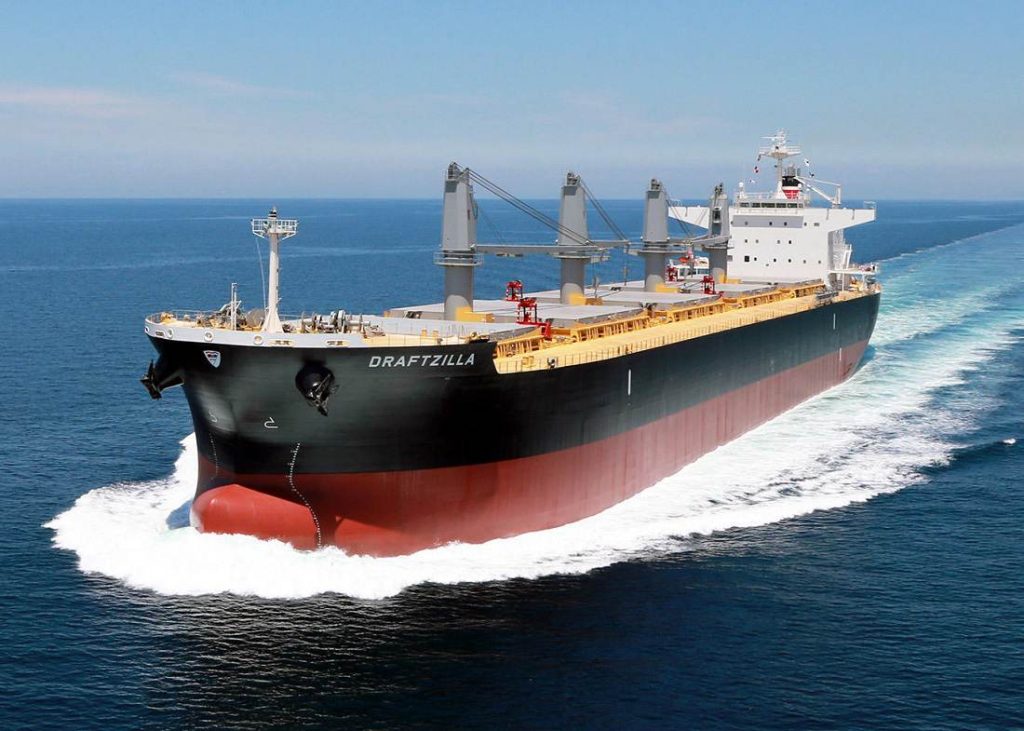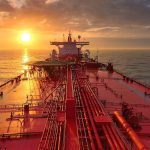It is very important that strict fire prevention is put into place onboard seagoing cargo ships and the following guideline will outline some of these measures. Nearly all fires, which have happened on board ships, could have been avoided.
Fire fighting on a ship is difficult and dangerous owing to the confined areas in which the fire can be tackled and restricted means of escape. These difficulties and dangers can be greatly reduced with the regular exercising and training in fire drills.
Components of fire: Fire requires the presence of three items;
- Fuel
- Heat
- Oxygen
These three factors give rise to the fire triangle and a fire cannot start or continue if one of the sides of the triangle is removed.
Fuel can be solid or liquid and when heated it will give off flammable vapours. Fuel can also be a gas which will start to burn when its ignition temperature is reached. Heat can be transferred by:
- Radiation (e.g. from a heating appliance, flames, spark or explosion)
- Conduction (e.g. through steel bulkheads)
- Convection (e.g. via gases, liquids or hot air circulated through vent trunking)
Oxygen is readily available in air.
Types of fire: The standard method of classifying fires is by the type of fuel which is burning;
- Class A: Fires involving solid materials usually of an organic nature, e.g. wood, paper, cardboard, fabrics, bedding etc
- Class B: Fires involving liquids or liquefiable solids, e.g. diesel, lub oils, cooking oils and fats etc.
- Class C: Fires involving flammable gases, e.g. acetylene, gas cargoes etc
- Class D: Fires involving metals. These are very rare but may be experienced in boilers and funnel uptakes and due to high temperatures may result in explosions.
Extinguishing principles: There are three main principles of extinction –
- Cooling: The burning material is cooled below its ignition temperature, usually using water in spray form. (Generally Class A Fires)
- Smothering: Oxygen is excluded from the burning material usually by using foam, CO2 or Dry Powder. (Generally Class B fires or major machinery space and major cargo space fires).
- Removal of Fuel: By physically turning off the liquid fuel supply or removing the combustible material.
- Disrupting the Chemical Reaction: By using extinguishing gases such as Halons, (BCF/BTM).
Sources of ignition:
The main sources of ignition most likely to occur on a ship are:
- Heat by radiation, conduction or convection.
- Electrical Spark (e.g. from faulty equipment or loose connections)
- A spark from impact (e.g. using a steel hammer in a dangerous area)
- Static Electricity (e.g. using nylon rope to sound oil tanks)
- Welding and other hot work
- Spontaneous Combustion (e.g. oil soaked rags or lagging)
- Funnel Sparks
- SMOKING
Engineering staff must be made aware of the susceptibility of certain agricultural commodities, e.g. soya bean meal, grains, etc., to damage from excessive heating of fuel in double bottom tanks. Over-heating causes charring of the commodity resulting in large claims and delays while the damaged cargo is removed. Other bulk cargoes such as sulphur, D.R.I. and coal, may cause even greater problems if in contact with a heated surface by spontaneously igniting. Control of tank temperatures is therefore of great importance.
Instructions for the carriage of a particular commodity issued by the shipper, e.g. ventilation, should be followed although any variance from the IMSBC Code should be questioned immediately.
Failed pipes cause, or contribute to, many serious fire accident on board bulk carrier. A diesel alternator caught fire after a low-pressure fuel oil pipe burst and sprayed oil onto the exhaust manifold. The pipe had been vibrating, and this movement had caused the pipe’s wall to chafe and become thin. The claim cost a new alternator and $100,000, but the fitting of a pipe support would have cost a mere $2!
Fire prevention: Fire can be prevented by following the below points:
- Good housekeeping is essential in all areas of the ship
- Smoking regulations are to be strictly observed – Do Not Smoke in Bed!
- Private electrical equipment such as radios, CD players and personal laptop computers including transformers and adapters for same are only to be used if the equipment is type approved. If any crewmember is in doubt as to whether the equipment is type approved he/she is to seek advice from the ship’s Master. When such equipment is not in use they are to be switched off and disconnected from the power source.
4. Laundry equipment is to be switched off when not in use. Electric irons must not be left unattended when switched on.
5. Clothes and other flammable materials must be kept clear of radiators, hot equipment and systems.
6. Galley equipment is to be switched off when the galley is left unattended. Galley equipment is only to be used by authorised catering staff.
7. Paints and painting materials are to be returned to the paint store on completion of daily work.
8. All other flammable working materials such as chemicals and gases are to be stowed in accordance with the manufacturer’s, and/or, Company’s instructions.
9. Spillages of oil, paint, solvents or other flammable liquids are to be wiped up immediately and rags disposed of correctly.
10. All rags, especially wet or oily ones, are to be safely disposed of immediately after use and must on no account be left lying around.
11. On moving around the vessel, particularly during safety rounds, be on the lookout for signs of possible fire hazards. If sighted they are to be reported to the officer of the watch. Any suspicious smells are also to be reported to the officer of the watch immediately. In addition the following are amongst the most successful means of preventing fire within the Machinery Spaces:
12. Definition of high-risk areas where additional precautions are to be taken (e.g. purifier rooms)
13. Frequent safety rounds of the engine room
14. Correct maintenance of machinery and all other equipment
15. Insulating hot areas such as exhausts.



Comments are closed